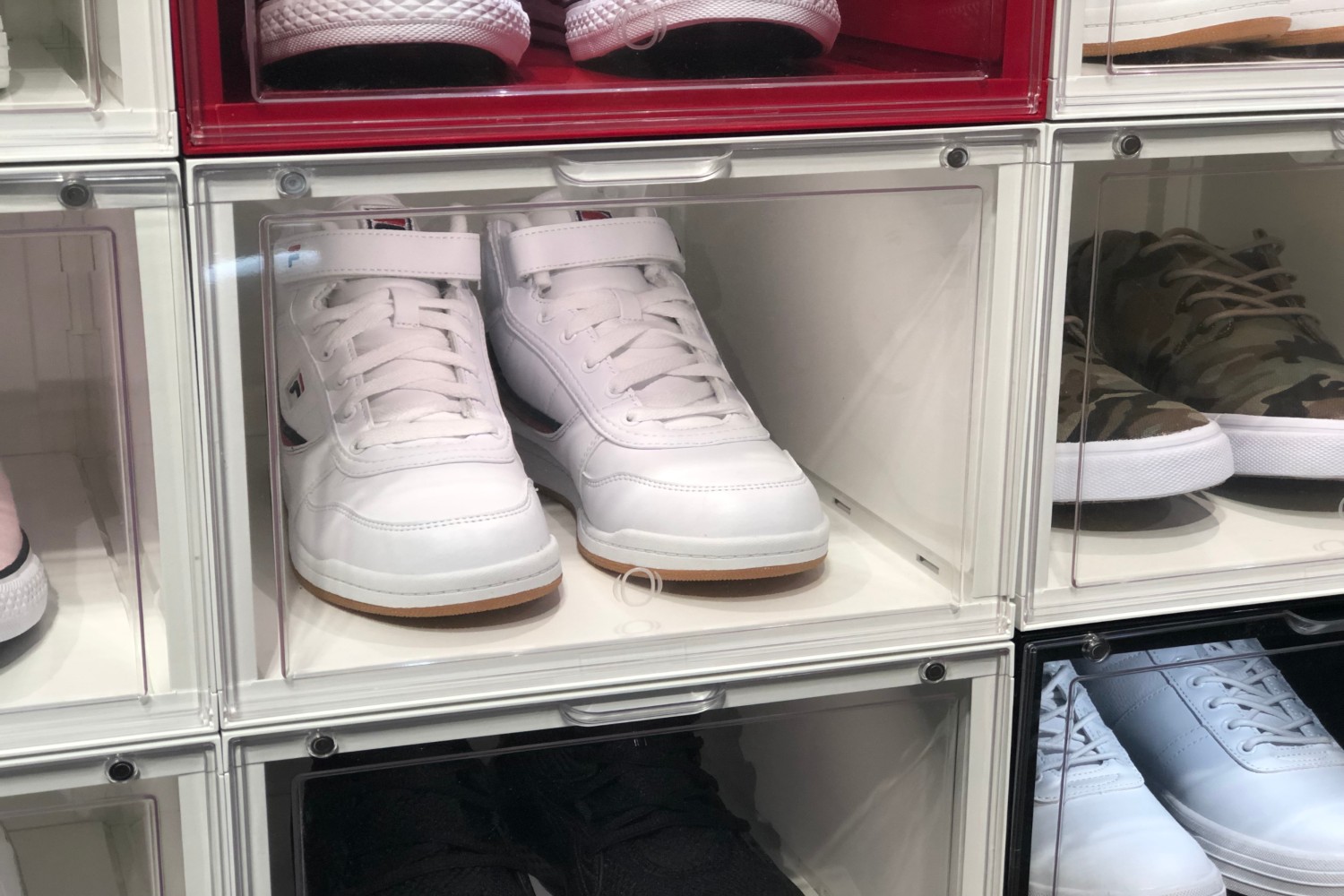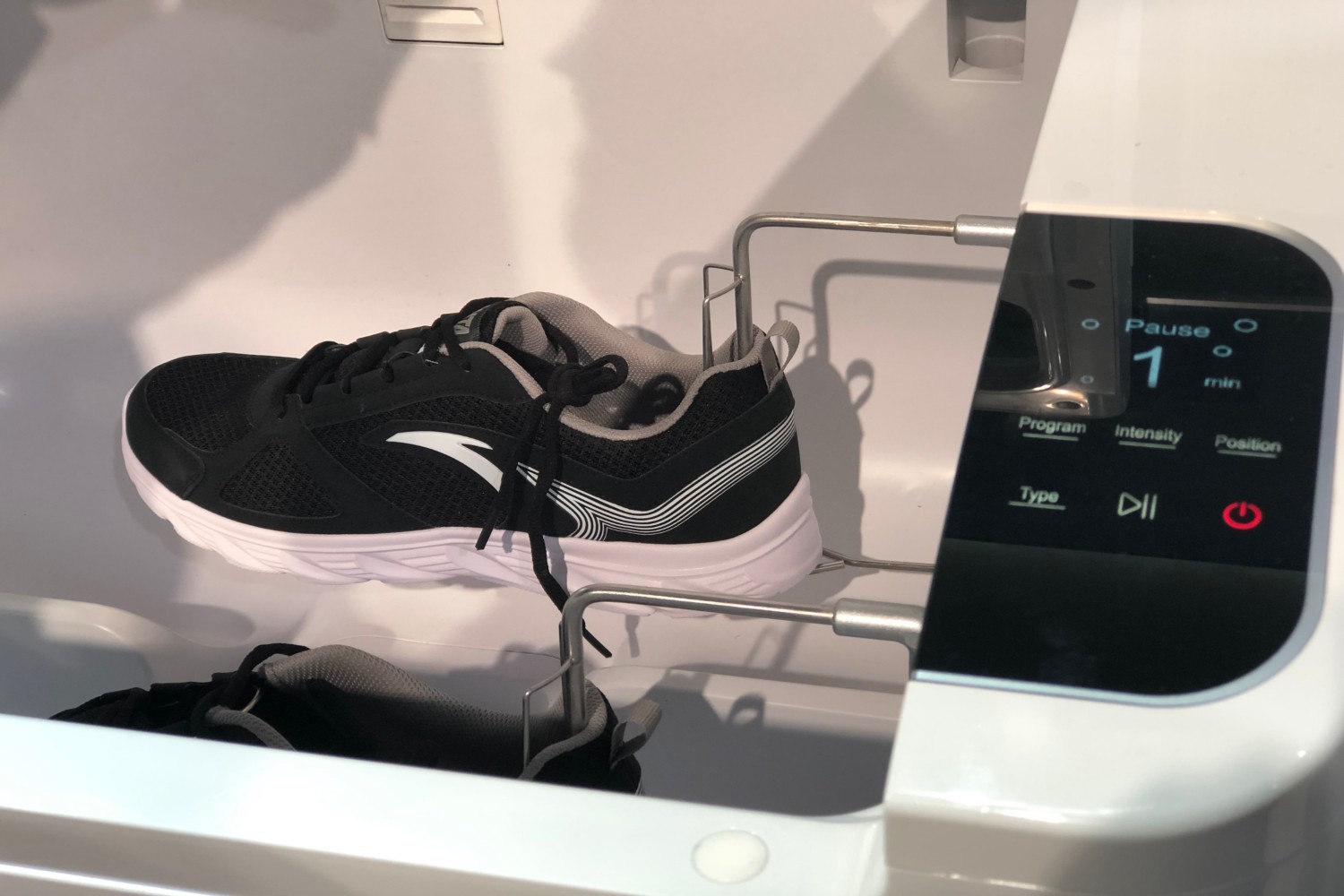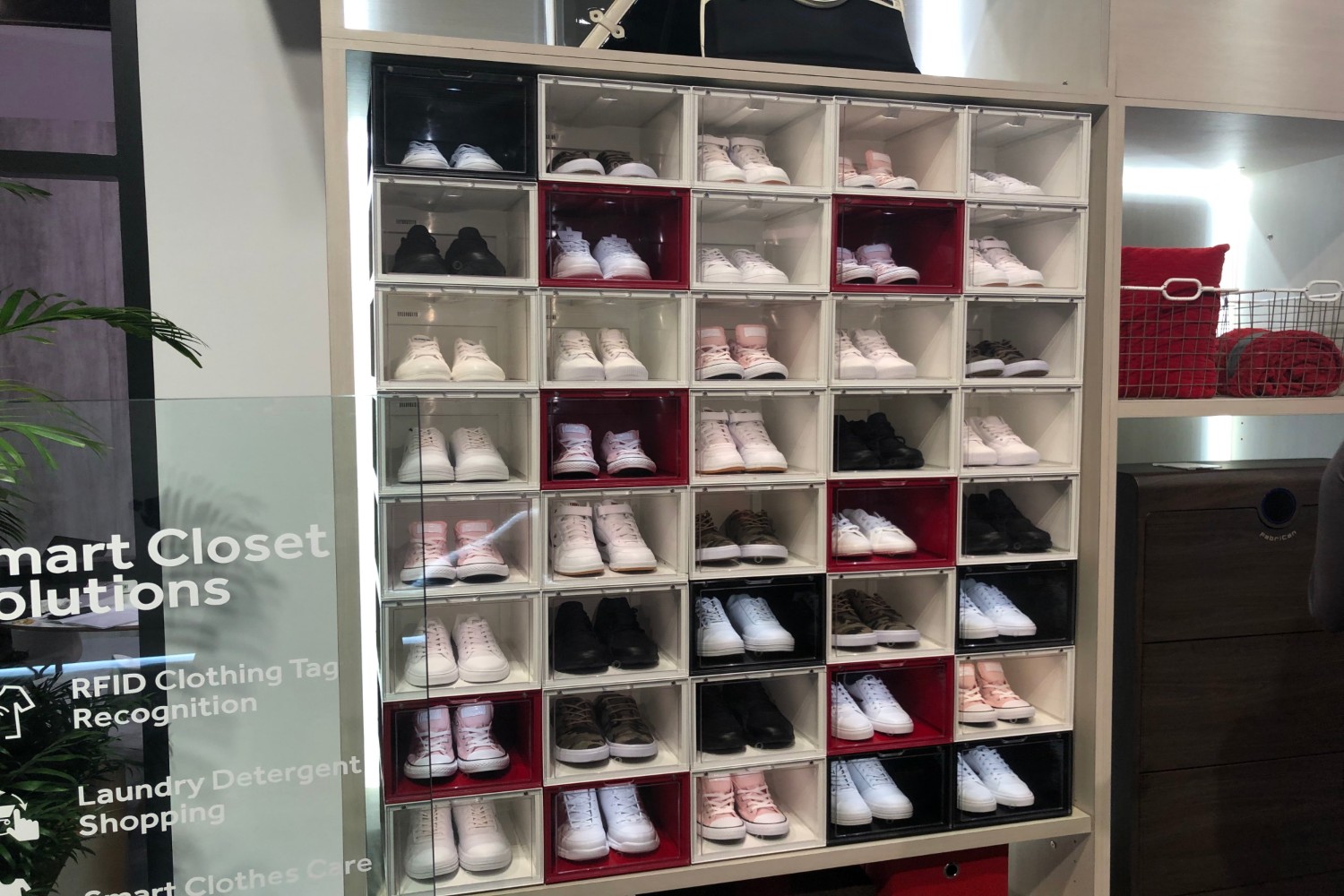Even if you’re not a sneakerhead, you probably have a favorite pair of athletic shoes that you run into the ground. That means they might be grimy or smelly, and you might not clean them as often as you should. Sure, you can toss them in the washing machine, but they’re going to tumble, rattle, and bang around, even on the gentle cycle. Haier found not just one solution, but several, for the Chinese market.
At CES 2019, we got a peek at the sneaker cleaner. Actually, it was hard to miss. There was a wall of shoes in clear boxes. It’s a modular setup, so if you don’t have as many pairs as DJ Khaled (or someone else who pops up when you Google “celebrity sneakerhead”), you don’t need to devote an entire wall to your footwear. But the boxes are more than a display. They use airflow, ozone, UV light, and carbon to keep your sneakers disinfected and prevent discoloration.
If your sneakers need something more intense, Haier also makes what it calls the world’s first shoe washer. It’s kind of like a sneaker car wash. In the box, water sprays from all directions and mixes with special shoe detergent. The appliance maker is working with detergent manufacturers to develop pods for the machine as well. The racks that hold the shoes can rotate, and there’s a moving brush that scrubs them. It takes about 5 minutes to complete the cycle, and then you can pop your pair of shoes (it only cleans two at a time) in the accompanying shoe dryer. This is the first generation of the machine, and newer versions should be able to tackle shoes other than sneakers. For disinfecting and drying in one, the Haier smart shoe cabinet deodorizes and dries, especially if it knows you were out in the rain all day, thanks to the weather report it received via internet connection.
Haier didn’t say anything about bringing these solutions to the U.S. market anytime soon, and the same is true for its RFID laundry technology. Its Casarte washing machine can read clothing tags with these sensors and adjust its settings accordingly. Certain brands working with Haier might include information about the color and fabric of the garment in the RFID tag, so it runs a gentle cycle for a silk shirt, for example. For washing machines that are internet connected but don’t have the RFID reader, Haier also created a separate reader that would let these machines similarly set cycles based on the type of garments they’re washing.
RFID tags are mostly used to combat high-end fakes at the moment, and because of privacy issues, there are probably some consumers who wouldn’t want them in their garments at all. Still, it was one of the more exciting laundry products we saw at CES this year. (Sorry, Foldimate.)





